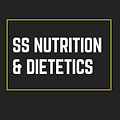Feel Fuller for Longer- The Many Benefits of Low GI
- Srdjan Savic
- Jun 20, 2019
- 3 min read
Every one of us has experienced the disappointment of a meal that doesn’t really satisfy. Even though you have finished everything on your plate you find yourself back in the kitchen in an effort to satisfy your hunger. If you have ever wanted to know the key to keeping the hunger pangs away, look no further than the glycemic index.
Super Carbs
Carbohydrates have gained a bad reputation in recent times but not all carbohydrates are created equal. The glycemic index is a number between 1 and 100 that measures how carbohydrates affect your blood sugar levels. The carbohydrates in rolled oats, for example, are digested slowly, leading to a gradual rise and fall in blood glucose levels- therefore they have a low GI rating.
Carbohydrates in high GI foods on the other hand are broken down relatively quickly in comparison. Think of the consumption of high GI foods as a roller coaster ride, your blood sugar levels spike quickly but then come crashing down soon after.
This sudden rise in blood glucose levels forces your body to produce more insulin which over time can lead to type 2 diabetes. High GI foods also contribute to slumps in energy levels, followed by cravings for overly sweet sugar packed foods, which can set in motion a dangerous cycle.

This graph shows the impact of the glycemic index on
blood glucose levels
Meaning of ‘glycemic load’
GI measures the quality of carbohydrates while the glycemic load (GL) takes into consideration the quantity and the quality of carbohydrates. This means that if you consume a large portion of low GI foods in one sitting your body still has to work hard in order to digest all those ‘good’ carbohydrates. So the best advice is to eat small portions of low GI carbs.

Let’s talk about Whole Grains
The GI isn’t the only thing to consider when choosing which carbohydrate containing foods to consume. Whole grains such as grainy bread, brown rice and oats are much more nutritious than foods high in refined carbohydrates. The reason for this is that whole grains contain all three layers of the grain, which means they are rich in fibre, heart healthy fats and antioxidants. Whole grains also provide many other health benefits such as helping reduce risk of heart disease; some cancers and even helping reduce the risk of early death.

Top 5 reasons to choose Low GI
1. Feel Full For Longer
Low GI foods are digested slowly, so they will keep you feeling full, making you much less likely to overeat.
2. Heart Healthy
Many Low GI foods are high in fibre, which can help reduce ‘total’ as well as the ‘bad’ LDL cholesterol which increases your risk of heart attack and stroke.
3. Long Lasting Energy
In contrast to a short burst of energy from high GI foods, low GI foods provide you with long lasting energy that will help get you through the day.
4. Manage Your Blood Sugar Levels After Meals
If you have diabetes, low GI foods result in more stable blood glucose levels, which then reduces your risk of developing long-term complications later on.
5. Trim your waistline
Together with foods that are protein-rich, a low GI diet can reduce your insulin levels and help you burn body fat, assisting you in reaching and maintaining a healthy body weight.


A Sample Low-GI Menu for 1 Week
This sample menu shows what a week on a low-GI diet might look like. Feel free to adjust this based on your own needs and preferences.
Monday
Breakfast: Oatmeal made with rolled oats, milk and chopped fresh fruit
Lunch: Chicken and salad sandwich on whole grain bread
Dinner: Beef stir-fry with vegetables, served with long-grain rice
Tuesday
Breakfast: Whole grain toast with avocado, tomato and smoked salmon
Lunch: Minestrone soup with a slice of whole grain bread
Dinner: Grilled fish served with steamed broccoli and green beans
Wednesday
Breakfast: Omelette with mushrooms, spinach, tomato and cheese
Lunch: Salmon and quinoa salad
Dinner: Homemade pizzas made with whole wheat Lebanese bread
Thursday
Breakfast: A smoothie with berries, milk, Greek yogurt and cinnamon
Lunch: Chicken pasta salad made with whole wheat pasta
Dinner: Homemade burgers with beef patties and vegetables on whole wheat rolls
Friday
Breakfast: Porridge with apple and cinnamon
Lunch: Toasted tuna salad sandwich on whole wheat bread
Dinner: Chicken and chickpea curry with basmati rice
Saturday
Breakfast: Eggs with smoked salmon and tomatoes on whole grain toast
Lunch: Egg and lettuce whole grain wrap
Dinner: Grilled lamb chops with greens and mashed pumpkin
Sunday
Breakfast: Buckwheat pancakes with berries
Lunch: Brown rice and tuna salad
Dinner: Beef meatballs served with vegetables and brown rice
.jpg)